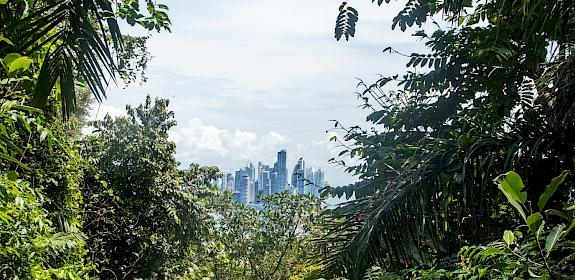Wild botanicals in products you consume: FairWild Week highlights trends, threats and opportunities
Cambridge, UK, 6th July 2018—last week the spotlight firmly shone on the often unspoken role of wild plants in our everyday lives.
FairWild Week championed the wild plants used as ingredients in thousands of consumer products, and called for their protection from overharvesting or unethical trade.
It was the second such FairWild Week event, following the inaugural week in August 2017.
Across the world, thousands of people shared their support, and often surprise, at the sheer variety and volume of wild plants in everyday circulation.
Among those helping spread the FairWild Week message were current participants in the FairWild initiative, including such well-known brands as Pukka Herbs, Neal’s Yard Remedies, Dr Jackson’s, London & Scottish, and the Organic Herb Trading Company, together with conservation organisations IUCN, WWF and others.
FairWild certification and how it has contributed to sustainable development and ethical and sustainable use of natural ingredients was showcased during the week.
Wild at Home, a TRAFFIC report released to coincide with the week, revealed the extent to which wild plants are traded, and the threats faced by many.
During this year’s FairWild Week, we wanted to spread the message about the worrying lack of knowledge among businesses and consumers alike about the levels of wild plants in trade, and whether their sourcing is sustainable and ethical
Anastasiya Timoshyna, TRAFFIC’s Medicinal and Aromatic Plants Programme Leader
Although many products in the market claim to contain “natural” or “wild” ingredients, there is often little basis to substantiate such claims, particularly in the case of wild-harvested plant ingredients where industry players are under no regulatory or other pressure to disclose the conditions under which the ingredients were harvested and traded.
Even in the case of “organic” certified products there are no detailed wild-harvesting standards required to substantiate how sustainably sourced there are.
“Considering the volumes involved and their significance to local communities, national economies and global industry, it’s essential that more resources are dedicated to reviewing key wild plant species in trade and ensuring their use is sustainable,” said Timoshyna.
She points out the immense opportunities for sustainable socio-economic development based on sustainable and legal trade in wild plants, and how adoption of certification schemes like the FairWild Standard can enable independent verification of responsible practices.
“Consumer organisations, governments, businesses and industry associations, retailers, and botanic gardens all have role to play in encouraging companies to move towards more responsible trading practices in often ‘hidden’ wild plant ingredients,” said Timoshyna.
In addition to raising awareness about the plight of wild plants in trade, FairWild Week also provided some tangible actions that consumers and businesses, can take to be part of a sustainable future for wild plants in trade.
Notes:
WHAT YOU CAN DO
As a consumer, you can look for the FairWild logo, which guarantees that the wild plants ingredients used in the product have been collected sustainably, and that those involved throughout the supply chain are paid a fair salary. You can also ask the brands you buy from, whether food, drink, cosmetics, beauty or health products, about the wild plants they use and whether their harvest, trade and production is fair and sustainable.
You can also check you home to experience first-hand the difficulties in establishing whether a product has wild plants in it. Gum Arabic for example, harvested from the wild and used as a thickener in sweets, chewing gun, and fizzy drinks, is often labelled as E414.
As a business, the first step you should take should be to review your supply chains for any wild plant ingredients, and assess the ecological sustainability and equitable trade practices involved against independent criteria such as the FairWild Standard.
Demonstrate your commitment to responsible and ethical wild plant sourcing by moving all of your wild plant supplies to fully verifiable sustainability.
The Wild at Home report calls for the actions by business be directed to the "Wild dozen" for the examples of species important in trade, wild-harvested, susceptible to harvesting pressure and/or that are in supply chains affected by the social inequality of trading practices. This list include, among others, shea nuts/butter, gum Arabic, frankincense, liquorice root, candelilla, pygeum and Jatamansi/spikenard.
FairWild Week has grown significantly from the inaugural campaign, reaching even larger audiences with more specific messages and actions about protecting wild plants. Yet, as this year’s FairWild Week comes to a close, it’s important to remember that the journey towards sustainability for wild plants in trade is far from over.




